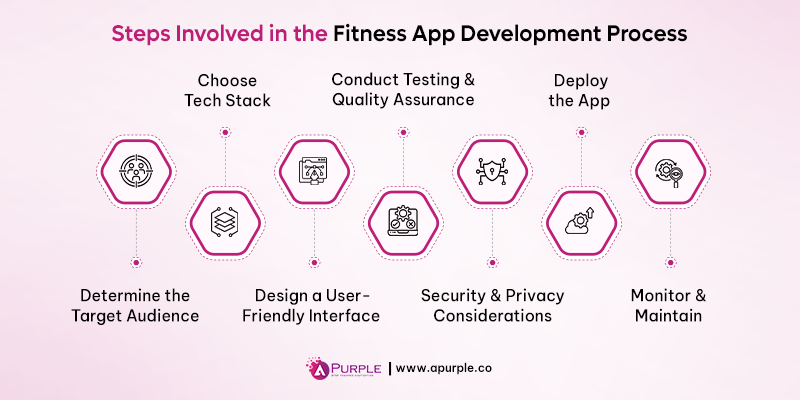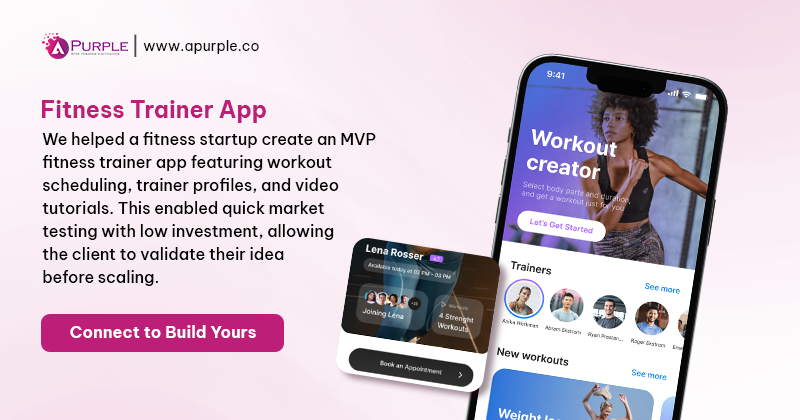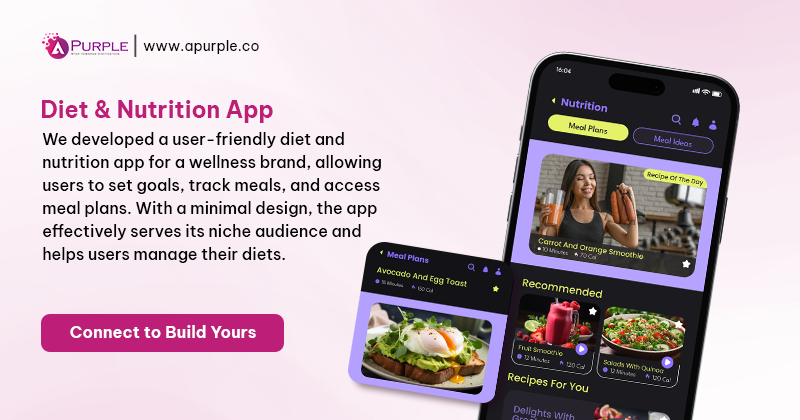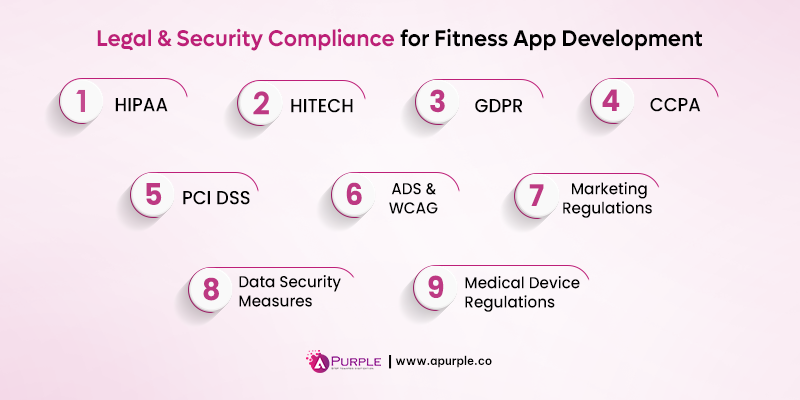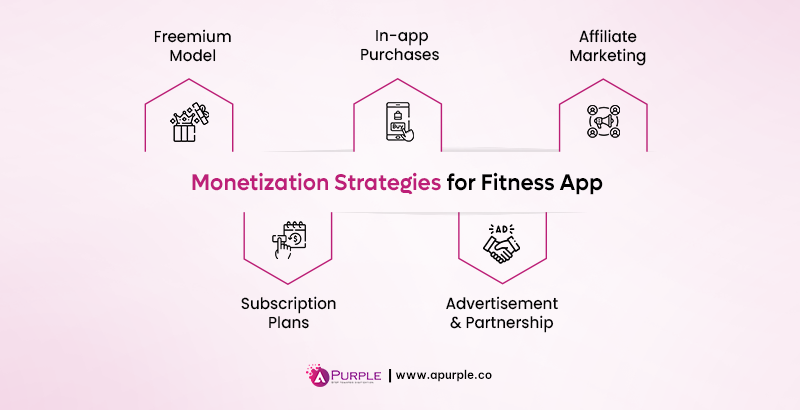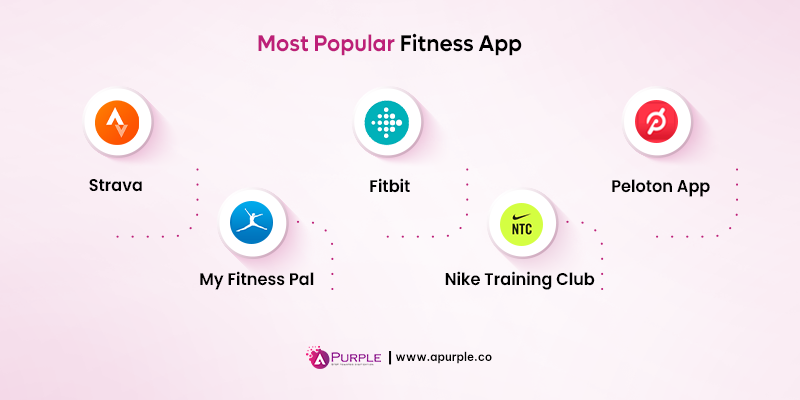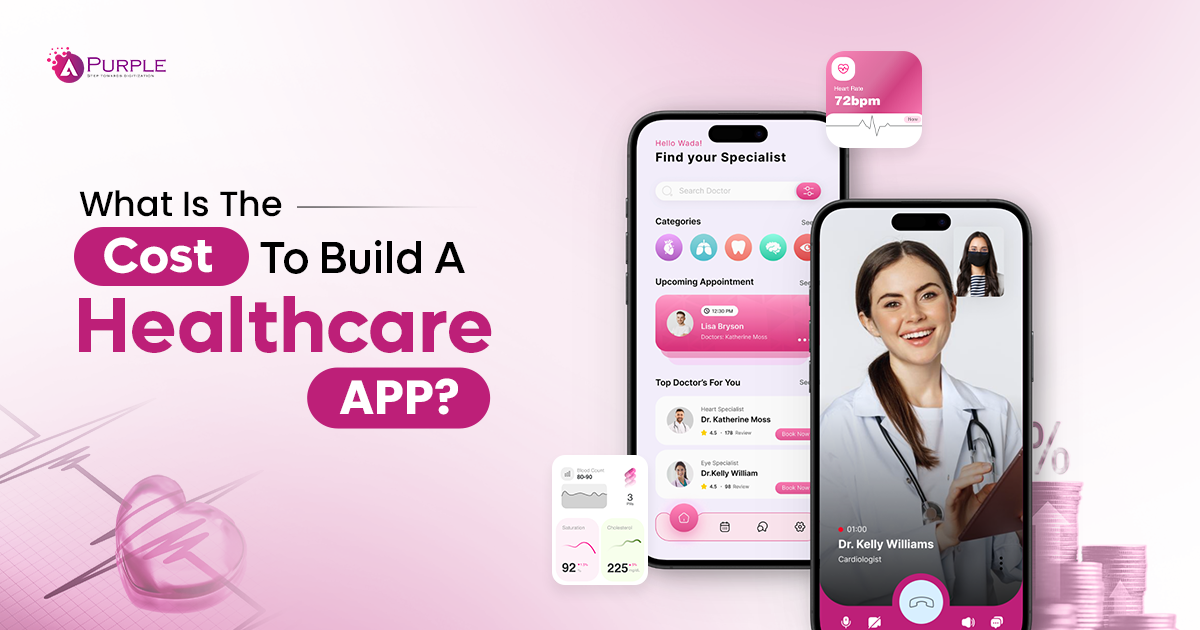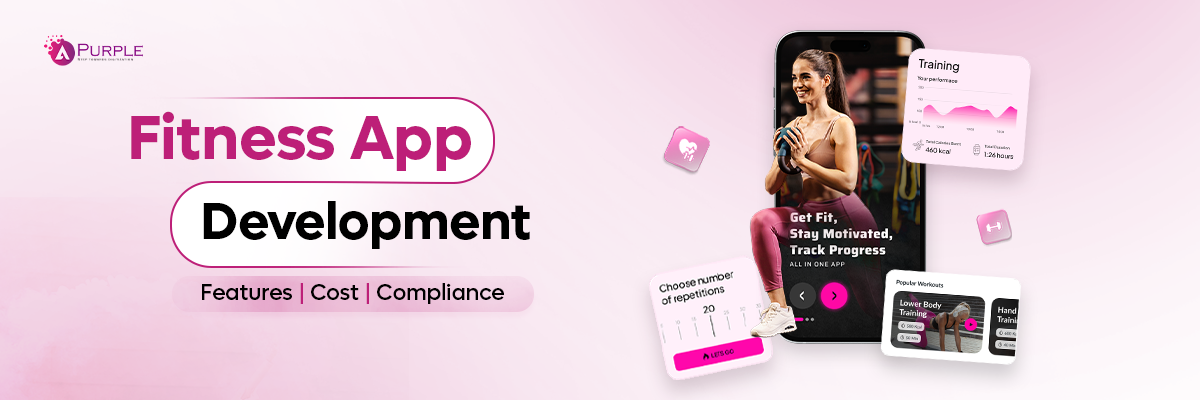
These days, particularly thanks to viral fitness & lifestyle influencer aesthetics that dominate TikTok, Reels, and Shorts, people are more conscious of their health & wellbeing. They are seeking fitness and wellness solutions that easily blend into their daily routines. This shift presents both a challenge and an opportunity for businesses in health, fitness, sports, or wellness. Traditional offline methods often fall short in engaging, as users nowadays demand more flexibility, personalization, and engagement.
This is where fitness app development steps in as a smart business solution. With the right app, you can stay connected with your audience, offer them workouts that actually fit into their lifestyle, and keep them motivated with real-time tracking and reminders. More importantly, it allows your business to reach beyond boundaries and create stronger, long-lasting relationships with them.
The future of fitness is digital, and those who adapt will thrive. Keep reading, because the next few minutes could give you the ideas you need to turn your fitness app vision into reality.
What is Fitness App Development?
Fitness app development is the process of designing, creating, and maintaining a mobile application or a web application that assists users in overseeing their health and wellness goals, such as tracking workouts, creating personalized diet plans, monitoring nutrition, and getting in touch with the community.
The development process involves a team of professionals and a properly planned approach to create user-friendly, engaging, and data-driven products that meet individual user needs and business objectives for the health, fitness, and wellness industries.
For startups, fitness app development is more than just building an app. It is about identifying the needs of your target audience and developing a product that provides real value. Whether it is a simple MVP that tracks basic activities or a full-featured app with AI-based recommendations, fitness app development aims to make fitness more accessible, engaging, and result-driven.
What are the Different Types of Fitness Apps?
The current fitness app landscape is becoming more diverse, providing solutions tailored to various lifestyles and fitness goals. Some businesses choose wellness app development to support overall health, while others focus on specific needs like nutrition and mental well-being. For example, a company may build a meal planning app for weight management, while another might develop a platform to track mental health progress. This variety allows users to find an app that aligns with their unique fitness journey.
| Types of App | Details |
|---|---|
| Yoga Apps |
Key Features
Target Audience
Popular Apps |
| Running Apps |
Key Features
Target Audience
Popular Apps |
| Strength Training Apps |
Key Features
Target Audience
Popular Apps |
| HIIT (High-Intensity Interval Training) Apps |
Key Features
Target Audience
Popular Apps |
| Dance Fitness Apps |
Key Features
Target Audience
Popular Apps |
| Nutrition & Meal Planning Apps |
Key Features
Target Audience
Popular Apps |
| Mind & Body Apps |
Key Features
Target Audience
Popular Apps |
What are the Must-Have Features of a Fitness App?
After exploring the different types of fitness apps and reviewing real-world examples, the next step is understanding the features you can include while designing a fitness app. Below, we’ve listed both basic and advanced features to help you plan effectively.
| Basic Features | Advanced Features |
|---|---|
|
|
What are the Steps Involved in the Fitness App Development Process?
To develop an app and turn your vision for a fitness app into a reality, you require careful planning and execution. Below, we have covered the detailed fitness app development steps, which will help you in understanding the process.
| Step | Description | Key Actions | Time Line |
|---|---|---|---|
| Determine the Target Audience & App Purpose | Establishes the foundation of the app development by defining the target audience and the problem it will solve. | Identify target users, define app goals, and establish a unique value proposition | 1-2 weeks |
| Choose the Technology Stack | Select the right fitness app development approach based on performance, budget, and scalability. | Decide between native, cross-platform, PWA, or no-code tools | 1-2 weeks |
| Design a User-Friendly Interface | Build an intuitive design that enhances user engagement and retention. | Create wireframes, design navigation flow, ensure accessibility, & focus on clean responsive UI/UX | 2-4 weeks |
| Conduct Testing & Quality Assurance | Ensures stability, usability, and smooth functionality before launch. | Test UI/UX flows, fix bugs, run performance checks, validate app on multiple devices and OS versions | 2-4 weeks |
| Security & Privacy Considerations | Protects sensitive health and fitness data, ensuring user trust. | Implement data encryption, secure login, and GDPR/HIPAA compliance | Ongoing (parallel with development) |
| Deploy the App | Launch the app with proper optimization to maximize visibility and downloads. | Perform ASO, submit to App Store/Google Play, launch campaign | 2-3 weeks |
| Monitor & Maintain the App | Keep the app competitive, secure, and aligned with changing user expectations. | Track performance matrices, fix bugs, update features, and strengthen security | Continuous |
Step 1: Determine the Target Audience and App Purpose
The foundation of any successful app lies in a clear understanding of who you’re building it for and what problem it solves. At this stage, fitness app developers work closely with you. This is the stage where you:
- Identify your target audience to know who you are catering to. For example, fitness enthusiasts, beginners seeking guidance, a niche group like athletes, or seniors etc.
- Determine your app’s purpose to decide what features it will have.
- Differentiate your app to make it stand out in the competition. Offer a unique value proposition.
Solidify these aspects. This will lay the groundwork for fitness mobile app development.
Step 2: Technology Stack Required to Build the Fitness App
Each app that gets developed uses a specific technology stack depending on the features and platform the app is made for (Android, iOS, etc.). It is a critical decision.
Fitness app developers leverage a variety of tools and frameworks for fitness app development. Here are a few considerations you can make:
- Native Apps (Swift/Java) – Best performance, longest development time.
- Cross-Platform (React Native) – Faster development for iOS & Android.
- Progressive Web App (PWA) – Quick solution, limited functionality.
- No-Code Builders – Avoid unless your app is extremely basic.
Step 3: Designing a User-Friendly Interface for your Fitness App
In today’s app-saturated market, a user-friendly interface (UI) is no longer a bonus – it’s a necessity. You have to provide your users with a smooth and soothing app experience. Otherwise, you’ll lose the high competition.
Healthcare app design presents a distinct set of challenges compared to other apps. Here is what you can do about it while going through your fitness app development:
- Practice simplicity. Ensure that the layout is clean and uncluttered.
- The navigation must be easily understandable and allow people to navigate smoothly.
- While designing a fitness app, try having a visually appealing design. Make sure your fitness app development company holds the required experience in UX and UI.
- Try providing accessibility features like adjustable size, color, contrast, etc.
And, at last, have a responsive mobile app design.
Step 4: Conduct Testing and Quality Assurance
Testing and quality assurance are critical stages in fitness app development to ensure your product runs smoothly across all devices and platforms. This process involves checking functionality, usability, performance, and security to eliminate bugs before launch. In native app development, testing is done separately for iOS and Android, while cross-platform apps require consistency checks across devices.
For healthcare app development, QA is even more important to safeguard sensitive data and meet compliance standards. You can ensure your app is reliable, secure, and ready for users through performance tests and security audits.
Step 5: Security and Privacy Considerations in Fitness App Development
Fitness apps often collect sensitive data such as health metrics, workout routines, and even location information.
In the year 2018, MyFitnessPal faced a brutal data breach that leaked the sensitive health data of nearly 150 million users. Trust and security a big factors in any company’s success. To ensure that your fitness app is safe and secure, here are a few things to take care of:
- Secure data storage over secure servers
- Secure login protocols
- Compliance with Data Privacy Regulations such as GDPR, CCPA, etc.
Always hire an expert fitness app development company that is aware of what security measures to take during health and fitness app development.
Step 6: Deploy your Fitness App
Once your fitness app development is complete and tested, the next step is deployment. Submitting the app to the App Store or Google Play requires following their specific guidelines to avoid delays or rejections.
Another thing to include in this is to promote your app on social media platforms, tie up with influencers, or do affiliate marketing. This ensures your app not only goes live but also gains the attention it deserves from day one.
Step 7: Monitor and Maintain the App
Feeling relieved? But there is a bit more to the fitness mobile app development. In the fast-paced world of fitness apps, ongoing monitoring and maintenance are crucial for sustained success. This is because the app market is constantly changing. New technologies are emerging each day, and user needs are changing.
To ensure that you stay in the competition
- Keep monitoring the performance metrics
- Use app data and feedback to carve out further strategies
- Keep removing new bugs and issues
- Keep incorporating the latest security measures
This is all that fitness app development includes. However, there are things apart from these steps that you must know.
We don’t just follow trends – we move with them. We have been providing web and mobile app development services for numerous years, and we can offer solutions that are as adaptable as your fitness goals.
Top Fitness App Developed by aPurple
How Much Does it Cost to Make a Fitness App?
On average, the fitness app development cost typically ranges between USD 10,000 to USD 50,000+, depending on the features and complexity.
The fitness app development cost can never be answered with one figure. Several factors influence the final cost that your fitness app development company might charge you. For example,
- Number and complexity of features to be included
- Level of customization
- App platform (iOS, Android, Windows, etc.)
- Expertise of the company providing fitness app development services
- Location of the development company
- Time in which the app is required, etc.
These cost factors are quite similar to those that influence healthcare application development costs, where complexity, integrations, and compliance also play critical roles.
Here’s a general range to provide a starting point:
| App Type | Development Cost |
|---|---|
| Basic Fitness App (limited features) | USD 10,000 – USD 20,000+ |
| Feature-Rich App | USD 20,000 – USD 40,000+ |
| Highly Complex App (advanced features) | USD 50,000+ |
Note: Price range may vary depending on the app complexity other pre-discussed factors.
Pro Tip: You can opt for MVP development to reduce your fitness app development costs. The average MVP app development cost cost ranges from USD 9,500 to USD 15,000+, allowing you to launch quickly, gather feedback, and scale with advanced features later.
What Compliances are Involved in Fitness App Development?
Building a fitness app is not about features and designs, it is also about following the right compliances to keep user data and your business legally secure. Below, we are sharing some critical compliance you must consider for fitness app development:
1. Health Insurance Portability and Accountability Act (HIPAA)
If your app contains protected health information (PHI) in the US, HIPAA compliance is a must. This makes sure that data like history or health records of the users are kept private and secure.
2. Health Information Technology for Economic and Clinical Health Act (HITECH)
This act builds on HIPAA and focuses on protecting electronic health records (EHR). If your app manages electronic PHI, HITECH compliance ensures that security and privacy standards are met.
3. General Data Protection Regulation (GDPR)
For a fitness app targeting EU users, GDPR requires clear consent before collecting data, transparency about how it is used, and guarantees its safety. It is all about giving users more control over their information.
4. California Consumer Privacy Act (CCPA)
The CCPA, enacted in 2018, is a privacy law essential for protecting the rights of consumers of companies collecting personal information from California residents, including healthcare organisations and fitness apps that serve users in California.
5. Data Security Measures
Even beyond laws, you need strong security practices, like data encryption, secure logins, and regular audits, to protect user information from cyber threats and build trust.
6. Payment Card Industry Data Security Standard (PCI DSS)
If your app processes payments, PCI DSS compliance ensures financial data is handled safely and protects users from fraud.
7. Accessibility Standards (ADS & WCAG)
Making the app accessible to users with diverse needs is essential for inclusive design. Following accessibility standards like the WCAG ensures that individuals with various abilities, including those with disabilities, can effectively use the app.
8. Marketing Regulations
If your app includes advertising or marketing features, you must comply with relevant regulations, such as FTC guidelines, ensuring transparency, accuracy, and fairness in your practices.
9. Medical Device Regulations
If your app goes beyond fitness and starts monitoring things like heart rate, ECG, or other health metrics, it might be considered a medical device. In that case, approvals from regulators like the FDA (US) or MDR (EU) may be needed.
What are the Top Monetization Strategies for a Fitness App?
After thoroughly analyzing the question, another important consideration that often arises is the monetization strategies for developing fitness apps. Selecting the right monetization strategy is as important as choosing the appropriate technology stack and features for the app, as it plays a significant role in ensuring sustainability and long-term success. Below, we outline some of the most effective monetization approaches for fitness apps.
| Monetization Strategy | Description |
|---|---|
| Freemium Model | This model offers basic features of the apps for free while offering premium content through subscriptions. |
| Subscription Plans | This provides users with weekly, monthly, or yearly subscriptions for full access. This works well for apps like Yoga Fitness, where users expect guided classes, live sessions, and video libraries. |
| In-app Purchases | Another type of monetization strategy allows users to purchase add-ons like specialized workout plans, diet charts, or exclusive fitness challenges. |
| Advertisement & Partnership | Partner with fitness brands or supplement companies to display relevant ads. Native ads and brand partnerships can generate revenue while maintaining a positive user experience. |
| Affiliate Marketing | Promote fitness gear, wearables, or supplements within the app and earn commissions from partner sales. This adds extra revenue while staying relevant to user interests. |
What are the Top Fitness Apps?
Fitness apps are booming with a wide variety of features, including guided yoga sessions, calorie trackers, AI-powered coaching, and gamified cycling experiences. Apps like Strava, Sweat, and many others are leading the way, thanks to their effective combination of motivation, personalised experiences, and community-driven challenges. Below, we have listed some of the best fitness apps available:
| App Name | Details |
|---|---|
| Strava |
|
| My Fitness Pal |
|
| Fitbit |
|
| Nike Training Club |
|
| Peloton App |
|
How to Overcome the Challenges Occurred While Developing a Fitness App?
Creating a successful app comes with numerous challenges. Whether you are developing a yoga fitness app, a fitness tracker app, or a custom fitness app for a specific audience, you may encounter various obstacles. Below, we are sharing some common challenges along with their solutions to assist you on your fitness app development journey.
1. Standing out in the Market
Challenge: There are so many fitness apps in the market, one of the most challenging aspects faced by startups is how to differentiate their fitness app.
Solution: To deal with this, try to define a clear niche and unique value proposition. For example, during the yoga fitness app development, focus on adding guided video sessions and mindfulness tools, while a fitness tracker app might emphasize real-time data from wearables.
2. Providing Accurate Tracking and Data Integration
Challenge: In today’s hi-tech world, users trust in real activity and health data. Any irregularity can lead to app abandonment.
Solution: The solution for this is to integrate APIs like Google Fit, Apple HealthKit, or device SDKs. Emphasize testing to ensure precision in step counts, calories burned, and monitoring heart rate for effective fitness tracker app development.
3. Balancing between App Simplicity & Advanced Features
Challenge: Adding so many features can overwhelm users, while adding too few may reduce engagement.
Solution: Start with MVP development and scale gradually. Hire expert developers who know the fitness app market. At the start, focus on essential features and then expand with advanced features.
4. Security and Privacy Concern
Challenge: Fitness apps often handle users’ sensitive health data, making it important for them to follow privacy rules.
Solution: The solution is to implement end-to-end encryption, secure login protocols, and comply with healthcare regulations such as HIPAA and GDPR.
Sprinting Towards The Conclusion
So, are you ready to enter the fitness app market? The world of fitness apps is growing rapidly, and with the right strategy, you can truly make an impactful app. By understanding the development process, choosing the right features, and planning the monetization strategy wisely, you will be on your way to building a fitness app.
Always remember, in this competitive world, user experience and security remain the real game-changers. A well-designed and user-friendly app will attract users and keep them engaged for a long time. And if you are looking for an expert fitness app development company, remember that aPurple is always here to help you.
Lace up and get started!
Frequently Asked Questions


